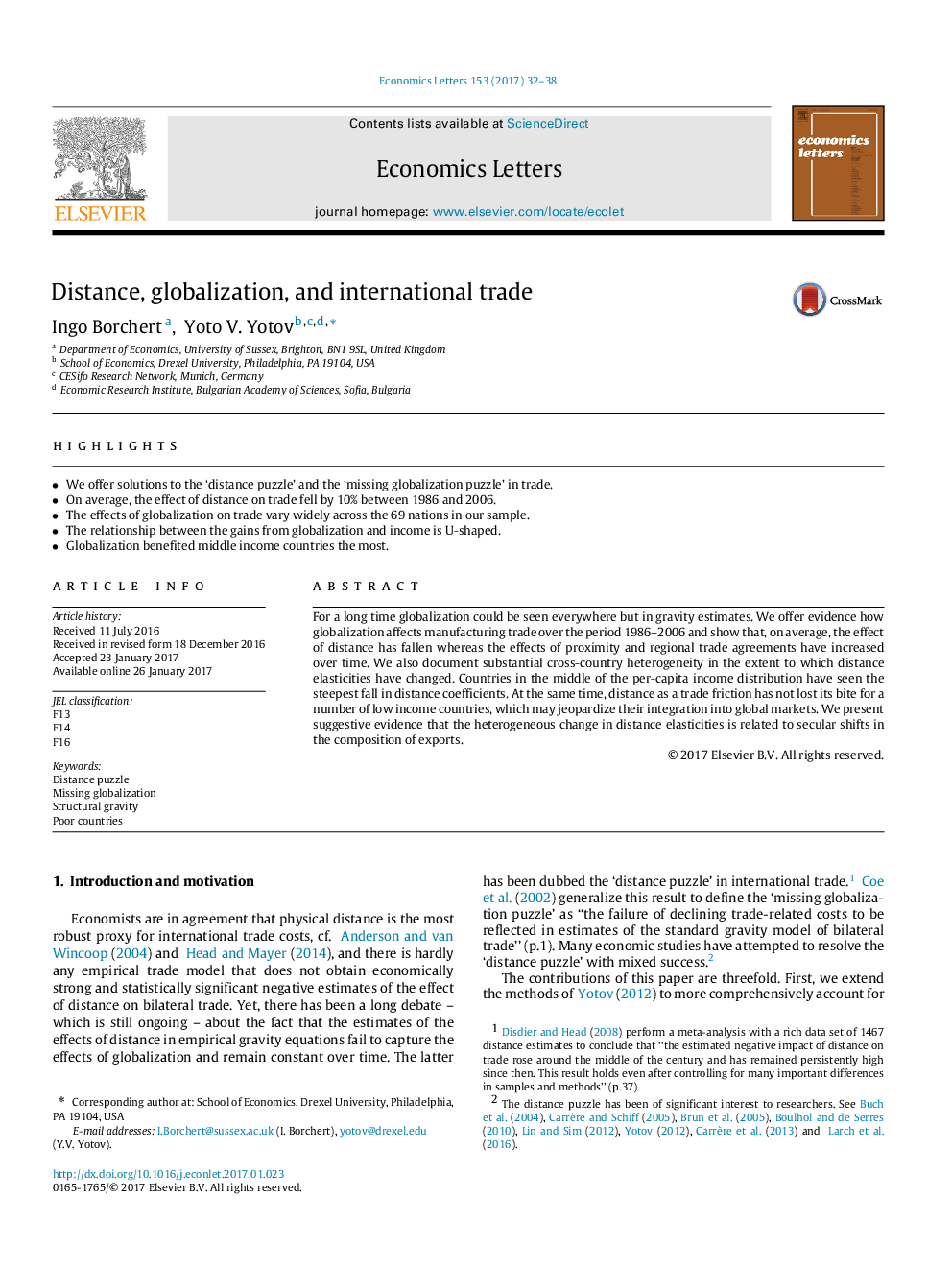| Article ID | Journal | Published Year | Pages | File Type |
|---|---|---|---|---|
| 5057717 | Economics Letters | 2017 | 7 Pages |
â¢We offer solutions to the 'distance puzzle' and the 'missing globalization puzzle' in trade.â¢On average, the effect of distance on trade fell by 10% between 1986 and 2006.â¢The effects of globalization on trade vary widely across the 69 nations in our sample.â¢The relationship between the gains from globalization and income is U-shaped.â¢Globalization benefited middle income countries the most.
For a long time globalization could be seen everywhere but in gravity estimates. We offer evidence how globalization affects manufacturing trade over the period 1986-2006 and show that, on average, the effect of distance has fallen whereas the effects of proximity and regional trade agreements have increased over time. We also document substantial cross-country heterogeneity in the extent to which distance elasticities have changed. Countries in the middle of the per-capita income distribution have seen the steepest fall in distance coefficients. At the same time, distance as a trade friction has not lost its bite for a number of low income countries, which may jeopardize their integration into global markets. We present suggestive evidence that the heterogeneous change in distance elasticities is related to secular shifts in the composition of exports.
